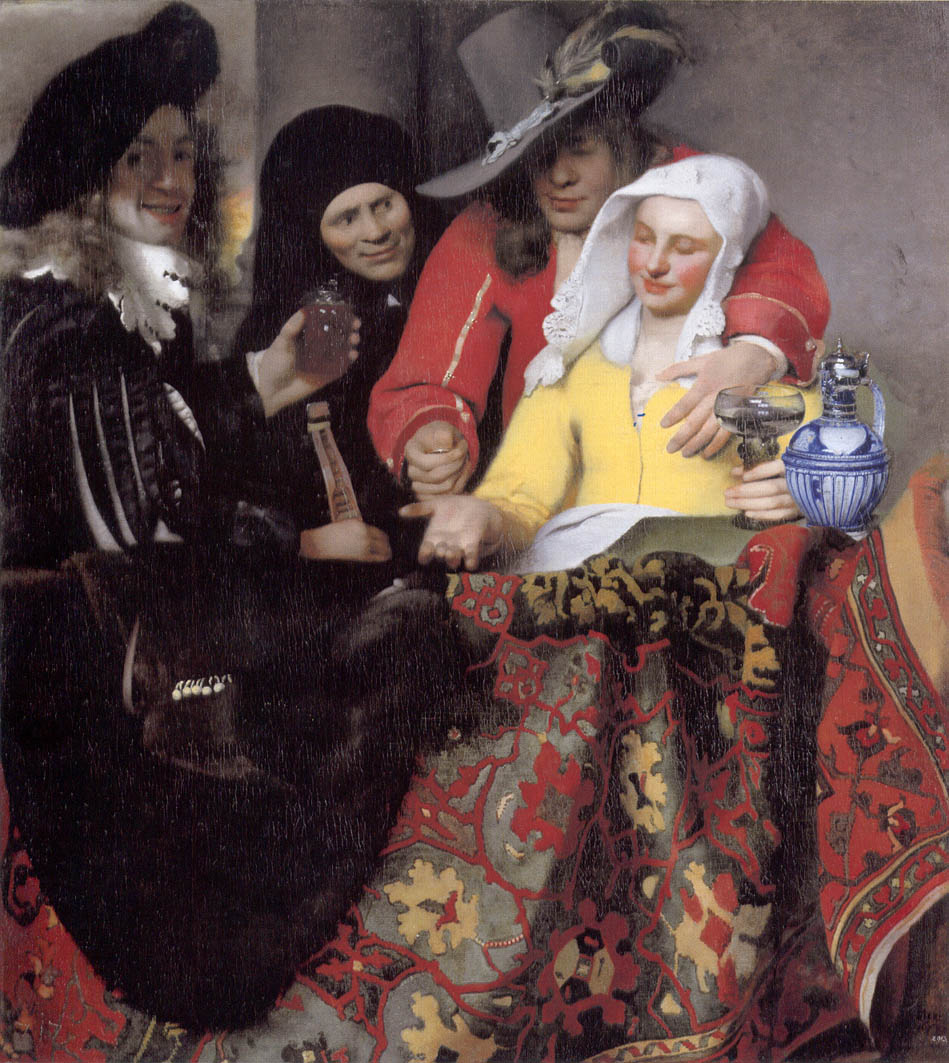Vermeer, Jan (1632-1675)
The Procuress (De koppelaarster)
1656
Oil on canvas, 143 x 130 cm
Gemäldegalerie Alte Meister, Dresden
A large part of this painting is taken up by a carpet. The clearly recognizable pattern identifies it as a carpet from Uşak, a place in western Anatolia with a long and rich carpet tradition. The example shown here can be dated to the first half of the 16th century due to the dark blue ground and the red onion-shaped central medallion. Oriental carpets can also be found in numerous other paintings, the artistry of which was greatly admired.
In his “The Matchmaker,” Vermeer transferred the large figure scale of his early historical scenes to a genre painting theme. With this other genre of painting, a surprisingly new way of seeing and painting also became the focus of his work. He based his work on the paintings of a Dutch group of artists whose heyday was already 30 years ago: the Utrecht Caravaggists. Starting with “The Matchmaker,” elements of this artistic movement run through his entire later work as borrowings or allusions.
Vermeer evidently began the painting with the intention of depicting a genre scene with four almost life-sized figures in the Caravaggesque tradition. The group is behind a curtained balustrade, where the subjects communicate with each other and with the viewer in a very small space. Vermeer presents us with a cheerful, calm scene in which the offensive nature of the situation is not immediately apparent. However, he leaves no doubt that it is a pimping scene: the suitor, dressed in a very fashionably manner, is paying while his left hand feels the young woman’s breast. It is no coincidence that the hands busy handing over the money are located exactly in the center of the composition, which is divided horizontally into two halves by the upper edge of the barrier. (SKD)
